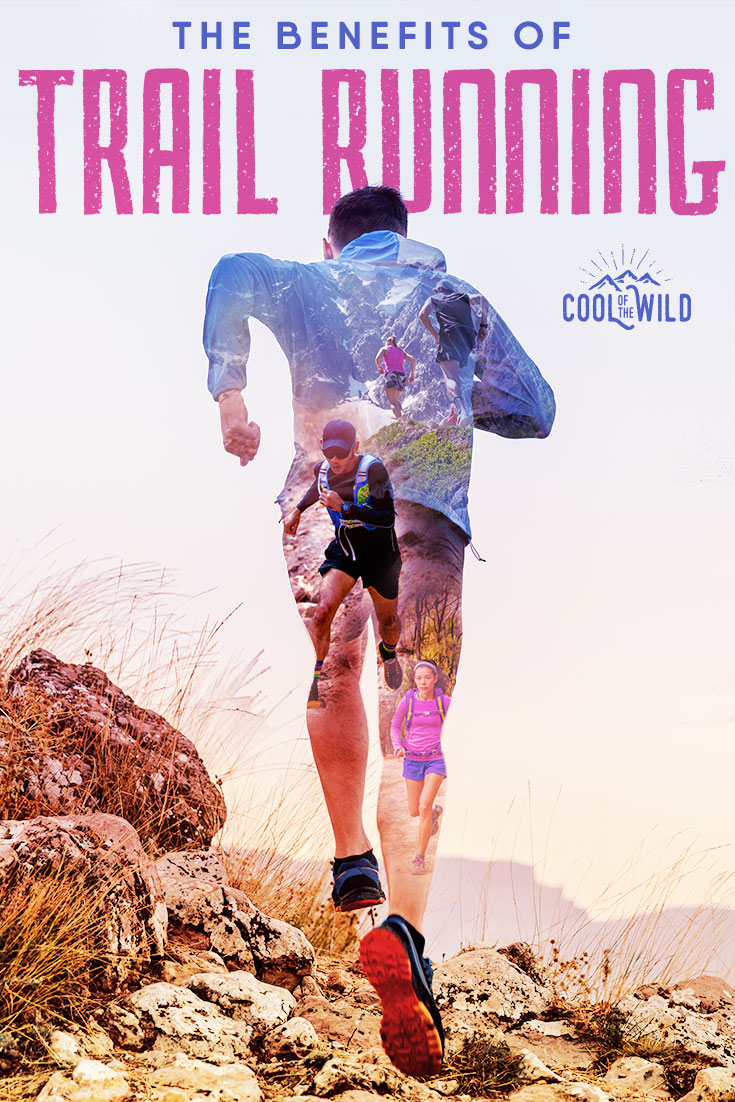I’ve always sought out parks and green spaces to go running in, even when I lived in London. I loved how stepping off the pavement and onto the grass made me feel immediately detached from the stress and noise of city life. The parks became a sanctuary for me and running in them was more important, and essential, than I realised at the time. But it wasn’t until I took to the trail out in the countryside that I truly felt and appreciated the multiple benefits of trail running.
Over the years I’ve been drawn to the trail more and more. Now I’m at the point where I’d rather not run at all than have to run on the road or pavement! I know, road running isn’t that bad. I just gain so much more from trail running than I do from road running. And that’s not just physically. The mental benefits of trail running are, for me, as good as any therapy session, if not better!
I’f you’re totally new to trail running then it’s a good idea to build up to it slowly. Read more in our guide to trail running for beginners. Running on the trail can feel very different to road running; more tough to start with that you might prefer! Work up to it sensibly, however, and you’ll soon find yourself soaring your way to the summit with ease.
12 benefits of trail running over road running
So here’s why I tend to avoid road running and why the benefits of trail running outweigh the benefits of road or treadmill running.
01More like fun than fitness
Fitness is one of those love/hate things for many people. We know we need to do it, we always feel great afterwards, mostly it’s not that bad actually doing it, but sometimes the thought of it is just too grim to even consider.
Don’t get me wrong, fitness can be, and often is really rather fun. The more fun it is, the more likely we are to do it. And the more we do it the better we get at it. With time, it doesn’t really feel like fitness at all! And so it is with trail running. Yes, it can be mega hard work, just like any kind of outdoor activity. But the more we do it, the more it becomes exactly that: an outdoor activity. One in which you need to prepare and plan for. One that requires route planning and plotting that brings excitement and a feeling of adventure.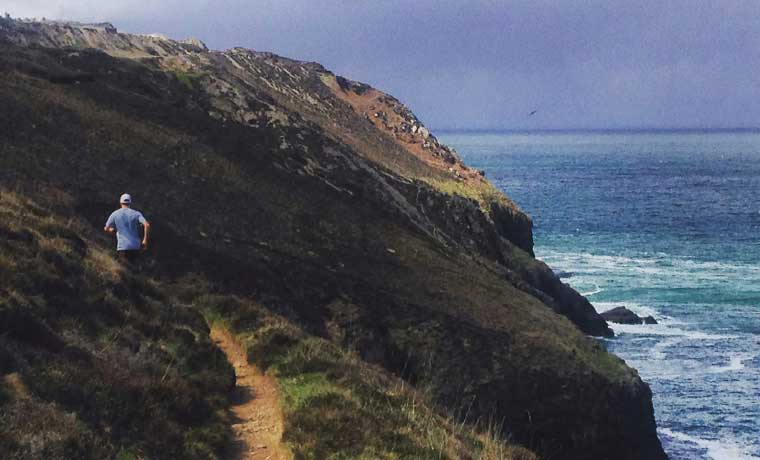
02You get to explore new places
One of my favourite things about off-road running is how it enables me to really get to know a place. A little bit of planning opens up a whole new perspective of an area. Take that hidden alleyway out the back of your town and you’re immediately transported into another landscape. That rough, rocky trail is a seamless connector between an urban world and the expanse of unknown beyond it. And that’s just for starters. Get the bus further out of town, or drive to a trailhead and the routes are limitless. After a little exploration you can start to map out in your mind all the places in between the settlements and roads. Suddenly there is meaning to those seemingly empty spaces, and that’s when you really start to know a place.
03Closer to nature
The more confident you get at route finding and exploration, the further afield you can go into the middle of nowhere. And of course, with this comes a heightened awareness of your natural surroundings. Scientists are constantly linking improved mental wellbeing with spending time in nature. But you don’t need to be a scientist to get your head around this link. Trail running takes you to places that are so detached from everyday life, it’s impossible not to feel the impact of nature. The peace and quiet calms the mind and before you know it you’ll be stopping to enjoy the view, to admire that small flower or to spy on the birds playing in the trees. You’ll notice animal tracks and, on your frequently visited routes, the new growth of a tree in the spring. Even competitive trail runners take the steep sections slowly, allowing time to enjoy their surroundings (as well as conserve their energy, or course!).
This feeling of closeness to the unruly wild places only makes you want to go back for more. It also makes you care about them more, to defend and protect them. They become part of you, influencing your everyday decisions and habits which in turn have environmental implications. Being closer to nature provides a tangible and very real reason to do and be better, environmentally. It’s a great cycle to be in, and aside from all the scientific reasons to get more in touch with nature, it just makes you feel really great!
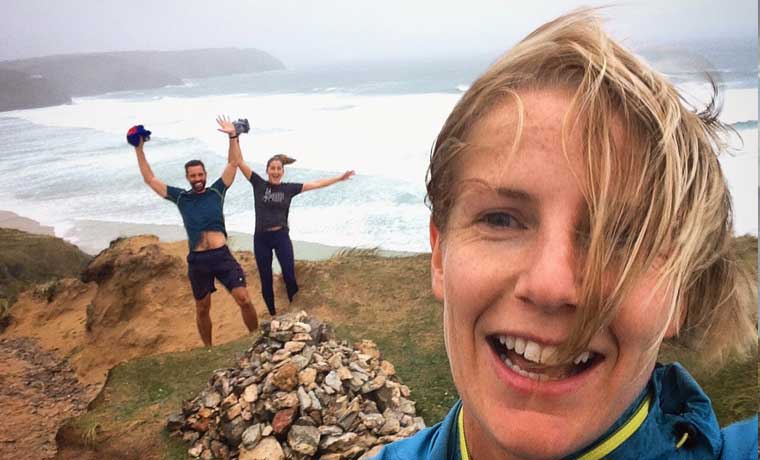
04Stress-relieving
Unless you’re able to run in a large park with paved trails, it’s likely that most of your road-running routes are on streets used by cars. Aside from the noise and pollution, there’s also the need to be constantly alert to the dangers of traffic. Whether you’re aware of it or not, this adds a great deal of stress to what should be a stress-relieving activity. Get out of town and onto a trail, however, and the only thing you need to worry about is whether you can make it up that big hill or not. And you can always just walk!
Of course, regular exercise is also proven to relieve mental stress by releasing endorphins (mood elevators) and lowering cortisol and adrenaline (stress hormones) levels. Add this to the positive effects of being closer to nature, and the benefits of eliminating external stressors (traffic, noise, people, pollution etc), and the benefits of trail running become more valuable than we may have previously considered.
05Improves mental strength and resilience
In between all that bonding with nature, wilderness adventure and stress relief, trail running can be downright hard work! The uphills can be long and gruelling, the weather can change quickly, and the trail isn’t always as friendly underfoot as you might have hoped. Plus, sometimes you might just be off your game and struggling to push yourself onwards. It’s at times like these – when you might have just called a friend to come pick you up from your road run in the past – when you’ve just gotta keep going! There is no bailing. You have to muster the strength and energy to get to the top of that never-ending ascent, even if you walk it. There’s no choice but to trek straight through that mud-filled stretch of trail that should be hard-packed dirt. And if that sideways rain keeps driving into your face, well, sobeit!
As the saying goes: what doesn’t kill you makes you stronger. The ability to build one’s resilience in the face of adversity is one of the more underestimated benefits of trail running.
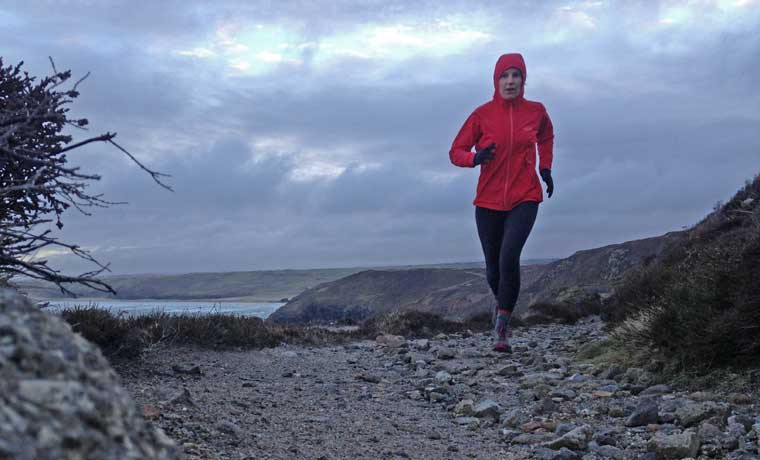
The physical benefits of trail running
But what about the physical benefits of trail running? What do we really gain from hitting the trail that we don’t gain from road running?
06Build muscular strength
Running isn’t renowned as being a muscle building activity. And though trail running ain’t going to turn you into Arnie, it’s certainly much more effective at helping you improve strength than road running. Firstly, there are usually way more hills out on the trail than on the road. They’re the sort of hills that are very steep and require large upward lunges to gain elevation. Hello glutes! Yep, steep, uphill running/plodding(!) will get your glutes blazing.
What goes up, must come down. Queue quad activation: the primary muscles working to control your downhill movement. Big descents can be super tough on your quads, leaving them quivering from fatigue by the bottom!
Then there’s your calves, a much neglected muscle group by gym-goers. These bad boys work double hard on the ups, but they’re also working constantly to stay balanced and in control on the tricky sections of flat trail.

07Burn more calories
Burning more calories trail running than road running comes down to a few factors. Firstly, the nature of uneven and unpredictable terrain means that your body has to work harder to stay balanced. Even when running on flat trails, there’s physically a lot more going on than running on flat tarmac. Secondly, trail runs are usually more hilly than road runs. Hills means relying on your large muscle groups more than usual, which requires more energy and results in more calories being burned.
Additionally, casual trail runners tend to spend longer out on the trail than casual road runners. Sometimes this is down to the route that is available; you’ve got to finish it and you can’t just cut the run down by a block or two if you’re feeling the burn. For many trail runners, it’s also down to the fact that being out on the trail is such a lovely experience. When there’s no place you’d rather be, why stop the fun?!
08Less impact on your joints
One of the main physical reasons I’ve found myself favouring the trail over tarmac is that I find it so much more gentle on my joints. Sure, I’m only in my mid-thirties. But I intend on running for as long as I can into old age, which means looking after my body now. Stomping repeatedly on hard, unforgiving ground for long periods of time can start to take its toll on your joints over time. Hit the trail, however, and the softer ground will lessen the impact on your whole body. Running on varied terrain means that you’re not overloading the same joints with the exact same movement over and over.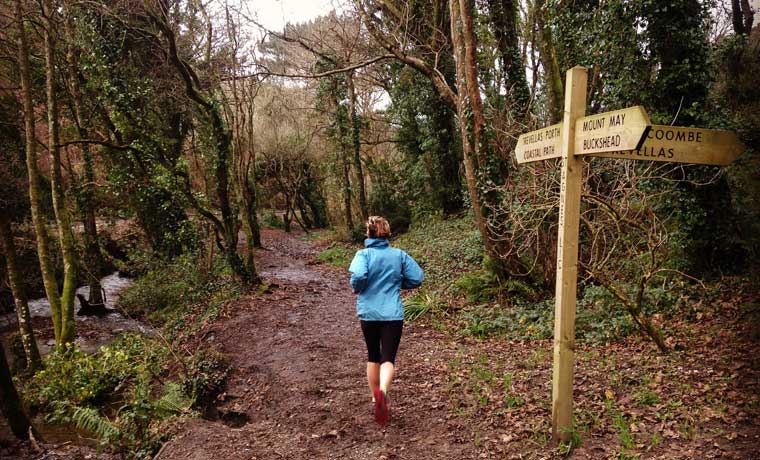
09Improve cardio fitness
If you’re training for a race or event then incorporating trail running into your training programme is a very smart choice. Not only will it help prevent injury (see below), but it will also do wonders for your cardio fitness. Opt for a hilly trail and you’ve got yourself a natural HIIT session that will improve your endurance and make flat road running feel like a breeze in comparison. Plus, because trail running is a bit kinder on your body than running on the road, you’ll be able to train at a higher intensity, for longer.
10Improve coordination and reactions
As you become accustomed to off-road running you’ll find yourself paying less attention to the ground beneath your feet. You’ll notice that your feet intuitively know where the roots, rocks and ruts are on the trail, and they’ll avoid them. It’s your proprioception that is improving; your awareness of what your body is doing without consciously thinking about it. And the more your body has to constantly adjust to the varied and unpredictable terrain, the better it becomes at dealing with the changes.
Improved proprioception means faster reactions and better overall coordination. This not only transfers over to other sports, but it also means that you can take on more technical trail runs with confidence. You’ll be skyrunning before you know it!
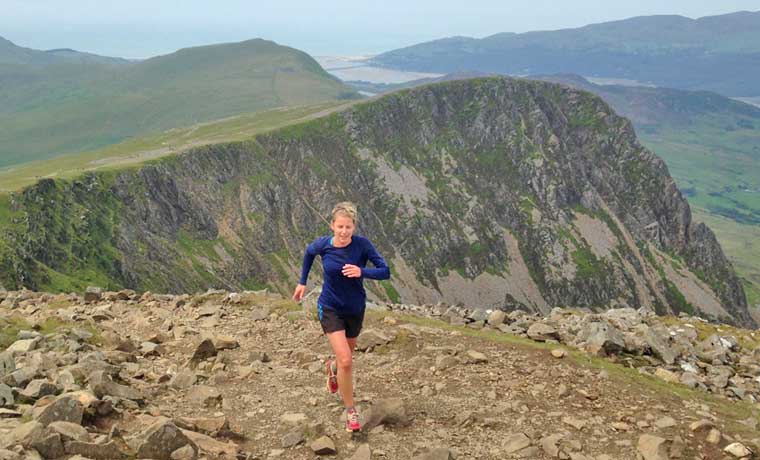
11Injury prevention
It may sound a little counter-intuitive, but having to negotiate obstacles and varied terrain on your run is an excellent way to prevent long term injury. First up, every step you take on a trail run is different to the last. The uneven ground means that each time you push off and then land, your body has to adjust to deal with the changes. Conversely, road running works the same muscles, ligament and tendons over and over with little variation. Over time, this localised over-work causes stress which can result in injury. Run on a challenging trail, however, and this stress is spread out over more of your muscles, spreading the load and allowing recovery between each minor challenge.
The double win comes when all those stabilising muscles – that don’t get worked much on flat pavements – slowly start to strengthen. And the stronger they are, the more they’re able to share the workload, thus lowering the risk of injury even further.
12Works the core
Every subtle alteration your body successfully makes to negotiate the constantly changing terrain doesn’t just happen by magic. Aside from all the small stabilising muscles in your legs, ankles and feet kicking into play, your core muscles also pull their weight. A longer stride to straddle a large root, a leap across a stream, a struggle up a steep climb or a shimmy to the side to dodge a rock, all involve altering the whole position of your body. If your core muscles were to back out of these movements you’d simply collapse onto the side of the trail, next to said rock. But they don’t back out. Instead, they step up, engaging more deeply and at more obscure and varied angles than usual. Thus, being worked more functionally and broadly than running in a straight line on flat, even ground.
Whilst getting off-road isn’t for everyone, the benefits of trail running are clear and can be enjoyed by casual and competitive runners alike.
Happy exploring, happy runners!
